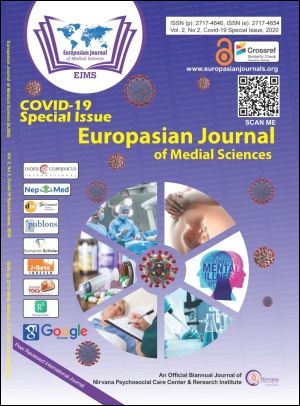The COVID-19 Paradox and Exit Strategy for Nepal
Keywords:
COVID-19, Lockdown, Exit-strategy, Pandemic in Nepal, Quarantine, Novel coronavirus infectionAbstract
Nepal’s challenges in combating the COVID-19 pandemic include a fragile economy, inadequate preparedness, open borders with India, and China. So far, Nepal has a toll of 22972 cases with 75 deaths as of August 10, 2020. Although, certain postulates like innate factors and the difference in virulence among different strains may have some protective effect as shown by the mild clinical picture in COVID-19 affected Nepalese citizens; the escalation of the daily number of cases is very alarming when the active cases in most of the countries are decreasing. So far, the cases have an increasing trend which shows that the government’s strategies are not working in favor of limiting the disease. This paper reviews how Nepal is tackling pandemic, comparing its strategy with the global scenario and reviewing efficiency of our previously adopted measures with an aim to understand the paradox of unique trend of pandemic in the South Asian region. With unsatisfactory results of current steps and injured economy, Nepal needs revise its strategy especially addressing the areas that need strengthening and incorporate this with the current re-opening plans as we move towards normalcy. Therefore, the government needs to come up with effective strategies including mitigation, preparedness, response, and recovery to manage this global pandemic.
Downloads
Downloads
Published
How to Cite
Issue
Section
License
Copyright (c) 2020 Rahul Kumar Thakur

This work is licensed under a Creative Commons Attribution 4.0 International License.
The author(s) retain the ownership of the copyrights for their work published in EJMS without any restrictions. Upon submission, the author(s) grants EJMS a license to publish, including to display, store, copy, and reuse the published content.
License to Publish
By submitting a manuscript to EJMS, the author(s) grant the journal a non-exclusive license to:
- Publish and distribute the content in all formats, media, and platforms (both existing and future), while identifying EJMS as the original publisher.
- Reproduce, display, and store the content in both print and online formats, including institutional and digital repositories.
- Translate, adapt, and summarize the work, including reprints, extracts, and abstracts.
- Develop derivative works based on the original content.
- Include the work in electronic databases and provide links to third-party materials.
Creative Commons Licensing
In addition to EJMS’s publishing rights, authors grant third parties the right to use, share, and distribute their work under the Creative Commons Attribution 4.0 (CC BY 4.0) International License. This allows unrestricted use of the content, provided proper attribution is given to the original author(s) and the journal.

